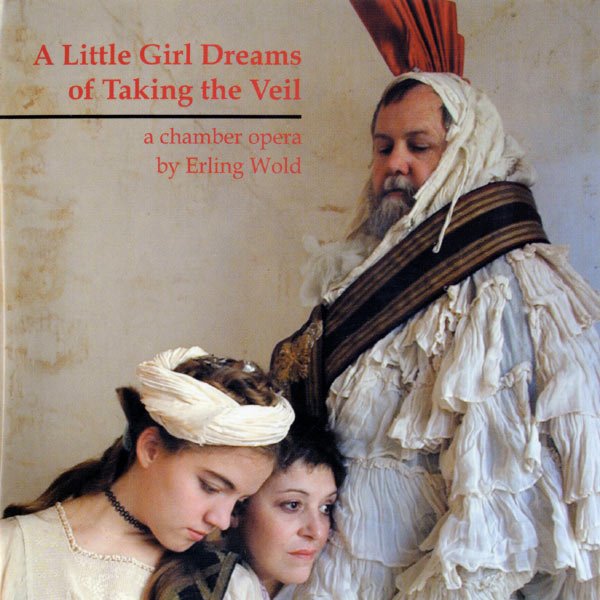What drives the piece is Wold's score, a beautiful and distinctive creation - San Francisco Chronicle
It gets a perfect rating because it's unique, breathtaking, and thoroughly unflawed. - Progression
a spellbinding wonder—hilarious and horrifying in that good old surrealist way, replete with sexual terrors, denuded schoolgirls and corny religious conflations. - CitySearch
SYNOPSIS
The opera is based on Dorothea Tanning's translation of Max Ernst's 1930 surrealist collage novel Rêve d'une Petite Fille qui Voulut Entrer au Carmel. Using Victorian penny novel visual motifs and captions as the basis for its construction, Ernst's book explores the non-rational but very real world of religious ecstasy and erotic desire. The opera interleaves the events of the little girl's dream with a surrealist narrative about the circumstances surrounding the dream including a rape, which the spontaneous child transforms into a fantastic prize: the opportunity for her first communion:
...at age seven and through the savagery of an ignoble individual she lost her virginity. It happened on the very day that first communion was refused her: she was too young, as her milk teeth proved. The individual, not content with having forced her, broke all her teeth with an incredible ferocity and by means of a large stone. The she came back and said to the Reverend Father Denis Dulac Dessale, while showing him her bloody mouth:, "now I can take communion, I have no more milk teeth."
The dream itself has four stages, indicated by the novel's chapter headings: The Tenebreuse, The Hair, The Knife, and The Celestial Bridegroom.
In The Tenebreuse, the little girl's desire to enter the church and to fit into religious as well as other forms of conventional society is shown to be at odds with her spontaneous imagination and powerful erotic desires. In addition, her imagination of "fitting in" is so unlike what is expected of her that the conflict between her internal sensibility and exterior reality causes her to split in two. The opera version represents her as three, in fact: Spontanette, the dreamer, and Marceline-Marie, the dreamed or split Spontanette. Throughout the work, the dream demonstrates the precociouness of Marceline-Marie-Spontanette's "... intelligence, the beauty of her imagination, and her ardent heart" as it unmasks the repressive institutions of church and bourgeois society through the dreamer's powerful journey into the vast interior of her own psyche.
The Hair section of the dream opens to the interior of our heroine's erotic self-discovery. In it, she tries on erotic fantasies with the exploratory passion of a child lost in a grandmother's antique wardrobe. In this eroticized dream-realm, she invites furry animals and insects under her skirts, experiments with fantasies about priests and father-figures represented in her dream as lascivious male grotesques, and tries on associations of sexuality with flesh-eating tress and death, debacle, torture, natural elements, and ornate spectacle.
The autoerotic phantasms in The Hair segue into a vast and extraordinarily powerful interior realm in The Knife. Here she discovers an atavistic and tragic god (represented as an eagle in the novel), who identifies himself as "god without woman," and her own anger and aggressive powers in the context of patriarchal betrayal. In adopting and integrating what is typically considered masculine aggressivity she defeats the masculinist stereotypes instigated against powerful female figures such as crones or Pandoras who are claimed under a patriarchal mythos as the propagators of "catastrophes, pestilence, rivers, war and pulmonary influenza" while she constructs a composite of forcefully enacted androgynous identities.
By the end of The Knife, Marceline-Marie-Spontanette has so thoroughly experienced and integrated her own emotional powers that the coming of the long awaited husband-god, in the last section, The Celestial Bridegroom, proves to be somewhat comical and anti-climactic. Indeed, she finds this god, who is represented as a series of split images and phony posturings, "in especially bad taste." The inadequate god-lover and the disaffected child mutually abandon each other in a disarrayed psychological state , mixed as it is with narcissisism, tacit acknowledgments, and vain indifference in which an ambiguously redemptive anger is passed off from the god to the child, becoming the only certain connection between them.
SCORES
Scores etc are on the works page here.
Supported in part by Opera America and Intersection for the Arts.


